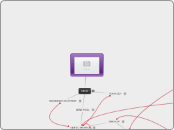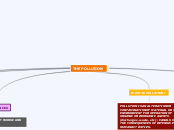By: Emily Miller
em29574
GENE
segment of DNA molecule that codes for a certain character
POLYPLOIDY
the state of having more than 2 sets of chromosomes.
results in genetic variation and new species.
INDEPENDENT ASSORTMENT
results in genetic variation.
sorting of maternal and paternal homologs into daughter cells independently of every other pair.
GENE POOL
aggregate of all copies of every type of allele at every loci in every individual in a population.
GENETIC VARIATION
interactions between genetic variation and environmental change cause natural selection. The environment determines which variations are more favorable. Favorable traits are passed on to the population.
Populations that are genetically variable can adapt to changing environments better than a population with less genetic variation.
GENE FLOW
Reproduction, migration, and immigration are all included in gene flow of the adaptations due to environmental change.
REPRODUCTION
Sexual selection is a part of reproduction.
GENETIC RELATEDNESS
Parents, their offspring and the offsprings' siblings have 50% of the same genes. Monozygotic twins have 100% the same genes.
MUTATION
random change in the genetic code
NEW PHENOTYPES
what an individual look like depends on the environment. their survival depends on what they look like in some cases.
NEW CLINES, RACES, SPECIES
Caused by accumulation of genetic differences that manifest in phenotypes.
BIOLOGICAL SPECIES CONCEPT
a species is a group of acutally or potentially interbreeding populations.
ADAPTATIONS
inhances survival, reproduction and viability
IMMIGRATION
extinction - equilibrium = immigration
DISTANCE EFFECT
biodiversity on islands of a specified size decline with increasing distance from the source
FOUNDER EFFECT
random changes in allele frequency in a population during colonization.
genetic drift occurs when a few individuals become isolated from the big population and form a new population. Their gene pool is not reflective of the original population because of chance (sampling error)
COLONIZATION
successful immigration
IMMIGRATION RATE
number of species coming per unit of time
TOGETHER WITH BIRTH RATE AND DEATH RATE DETERMINE THE NUMBER OF INDIVIDUALS IN A POPULATION
TOGETHER WITH EXTINCTION RATE DETERMINES # OF SPECIES ON AN ISLAND
MIGRATION
Environmental changes and disturbances make migration much harder for animals such as the butterflies. Scientists have considered linking reserves along their migration path in order to save them from becoming extinct.
MIGRATION: gene flow as a result of regular, long-distance change in location
MIGRATION FORMULA
Pim(m) + Pnat(1-m) = Pmix
m = migrants / old pop. + migrants
TRANSITIONAL ADAPTIVE ZONE
gradual change to avoid predators
DUE TO NATURAL SELECTION
response to environmental change
RESPONSE OF NATURAL SELECTION
all of these responses cause genetic variation in individuals and species and therefore create new species, races, or clines.
SEXUAL SELECTION
males compete, females choose based on phenotypes.
ALLOPATRIC SPECIATION
gene flow interrupted by a barrier; separated gene pools may diverge because of mutation, natural selection, and genetic drift; this may cause reproductive barriers even if the barrier is removed.
ADAPTIVE DIFFERENTIATION
development of different phenotypes from a common ancestor due to adaptations to different environments
SELECTION DIFFERENTIAL
measures intensity of seletion, the greater the force of selection, the greater the differences
STABILIZING SELECTION
extremes are at a disadvantage.
EXAMPLE: egg size, birth weight (both heretible)
CONVERGENT EVOLUTION
different genotypes between distantly related taxa giving similar phenotypes as a response to similar environments.
EXAMPLE: penguin, shark, whale
PARALLEL EVOLUTION
similar changes in phenotype between two geographically isolated taxa
ADAPTIVE RADIATION
development of several new species from a common ancestor due to adaptations to different environments.
BALANCING SELECTION
heterozygote advantage, single gene traits, harmful genes are retained in a population
EXAMPLES: thalassemia, G6PD deficiency
EXTINCTION
failure to respond properly to the environment.
EVIDENCE FOR NATURAL SELECTION
BALANCED POLYMORPHISM THROUGH HETEROZYGOUS ADVANTAGE
SELECTION OF SMALL OR BIG GUPPIE BODIES
EVOLUTION OF HEAVY-METAL TOLERANCE IN PLANTS
ANTIBIOTIC RESISTANCE
over time, bacteria evolve and build a resistance to antibiotics
EVOLUTION OF PESTICIDE
over time, pests evolve to become resistant to pesticides
INDUSTRIAL MELANISM IN PEPPERED MOTH
moths evolve to a darker color in industrial areas because the trees there are darker. this keeps them from standing out and getting eaten by birds.
ENVIRONMENTAL CHANGES AND DISTURBANCES
These disturbances are what cause all of the responses to natural selection. Individuals must evolve in order to survive.
PREDATION
predators can migrate depending of the environment they are used to. if the species that live there are not used to those predators, they will either die or have to adapt to a way of survival
GLOBAL WARMING
global warming changes the temperature of the earth but also affects many other environmental factors. environmental change makes species adapt or die
ALTITUDINAL/POLEWARD SHIFTS
species have to migrate to higher altitudes and lattitudes because it is getting too warm for them where they are.
RAPPAPORT'S RULE
low lattitude species have smaller ranges than high lattitude species bacause of specialization in the tropics.
ELEVATIONAL GRADIENT
higher climates=declining species diversity because only a few species can survive in that climate (specialization)
what happens when it becomes too warm for a species that is at the highest point of a mountain? extinction......
DISEASE
increase in disease in new areas of the world will occur because the temperature the disease needs is spreading across the world. in areas that have not been exposed to a certain disease, that disease introduction can be detrimental to a population.
WEAKENED BY SELECTION
diseases are weakened though
CHANGES IN DISEASE
diseases have to change because the people it affects at its worst will mostly be dead, therefore the disease cannot be spread at its strongest phase. it must evolve and most of the time it evolves into a weaker strain because by that time people have built an immunity and have knowledge of how to treat it.
IMMUNITY IN HOSTS
after a population has been exposed to a disease they will build an immunity and the doctors will be able to be familiar enough to have a vaccine and know how to treat it
PRECIPITATION CHANGE
too much rain or too less rain can cause a species to die or adapt. snow in an area that is usually warm can be detrimental to a population.
TEMPERATURE CHANGE
major changes in temperature can affect populations in negative ways
SEASONAL SHIFTS
Phenology; earlier spring events
COMPETITION
competition can change as a result of migration, immigration or environmental change. too many individuals and not enough food or shelter is a big problem.
LINEAL FISSION
a population splits into smaller groups to reduce competition
CHARACTER DISPLACEMENT
two species are more similar apart. When they are brought together, phenotypic change occurs over time to reduce competition.
RESOURCE PARTITIONING
evolutionary process of species living in the same ecosystem dividing up resources so that each species develops dissimilar resource requirements to avoid competition.
NICHE
Environmental changes affect the niches of species by changing precipitation, temperature, pathogens, and many other things that the species living there needs to survive.
NICHE: multidemensional resource space that a species uses
RACES
group of populations with similar gene frequencies that differ from other groups of populations in gene frequencies.
ZONE OF INTERGRADATION
gradual change when 2 races come together
ADMIXTURE/INTROREGRESSION
INTROREGRESSION EXAMPLE: F1 hybrid combines the genes of 2 parents of different races. the F1 hybrid mates with another of the father's race. as a result, the genes of the mother's race are absorbed into the father's race from that time on.
ADMIXTURE: mixing of genes, mate with different race but offspring mates with original race; their genes are mixed together into the original race
POPULATION
Immigration affects the growth rate of populations. It will account for a population growing even when their birth rate and death rates are in equilibrium.
POPULATION: a group of interbreeding individuals.
SPECIES KNOWN TO MAN
1,600,000
SPECIES OUT THERE
5-6 million









